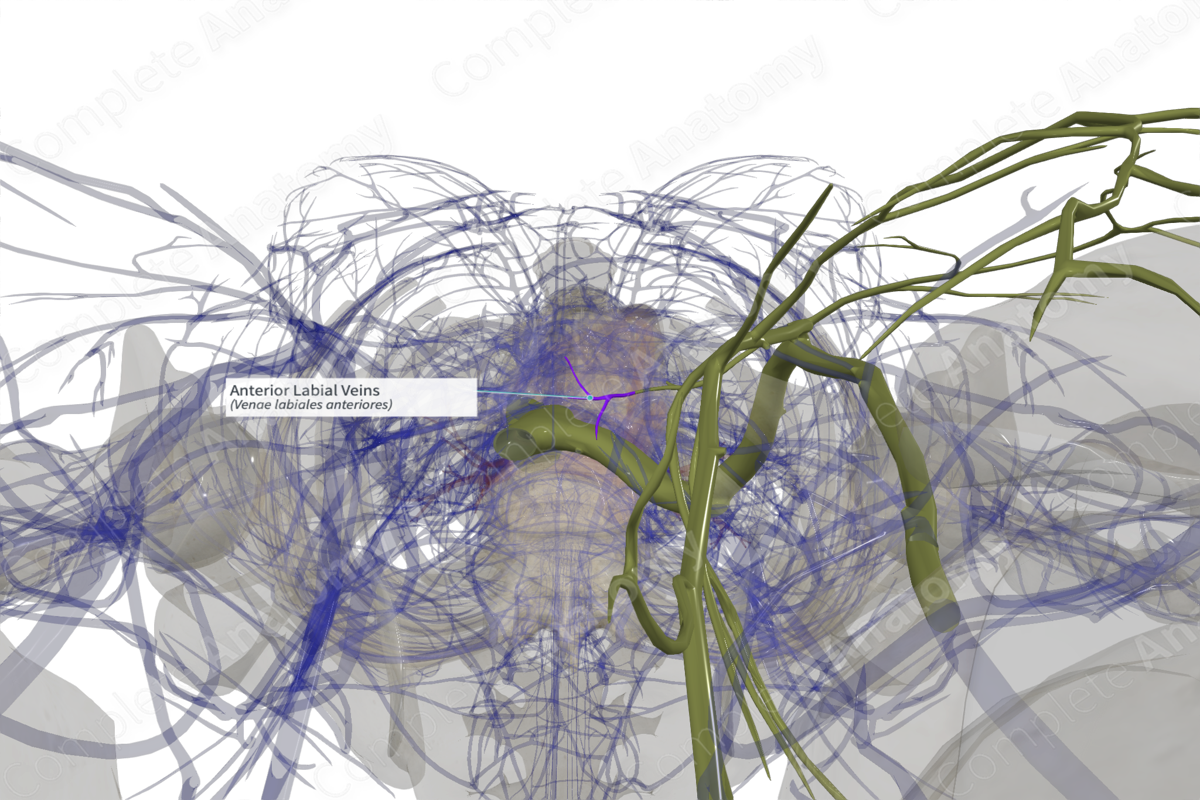
Quick Facts
Origin: Union of venules in the anterior aspect of labia majora.
Course: Travels in the anterior aspect of the labia majora and drains into the deep external pudendal vein.
Tributaries: Small venules.
Drainage: Anterior labia, bulb of vestibule, and clitoris.
Related parts of the anatomy
Origin
The anterior labial veins originate in the anterior aspect in this tissue of the labia majora.
Course
The anterior labial veins receive venous blood from the anterior aspect of the labia. From its origin, the veins run laterally, within the superficial fascia of the labia majora, to drain into the deep external pudendal vein. In some instances the anterior labial veins may drain into the internal pudendal vein (not modeled) (Moore, Dalley and Agur, 2013).
Tributaries
The anterior labial vein is formed by the union of small venules in the anterior aspect of the vagina.
Structures Drained
The anterior labial veins drain the anterior aspect of the labia majora, bulb of the vestibule, and clitoris. During the excitement phase of sexual response, the labial veins engorge, increasing the size and consistency of the clitoris and the bulbs of the vestibule of the vagina.
References
Moore, K. L., Dalley, A. F. and Agur, A. M. R. (2013) Clinically Oriented Anatomy. Clinically Oriented Anatomy 7th edn.: Wolters Kluwer Health/Lippincott Williams & Wilkins.




